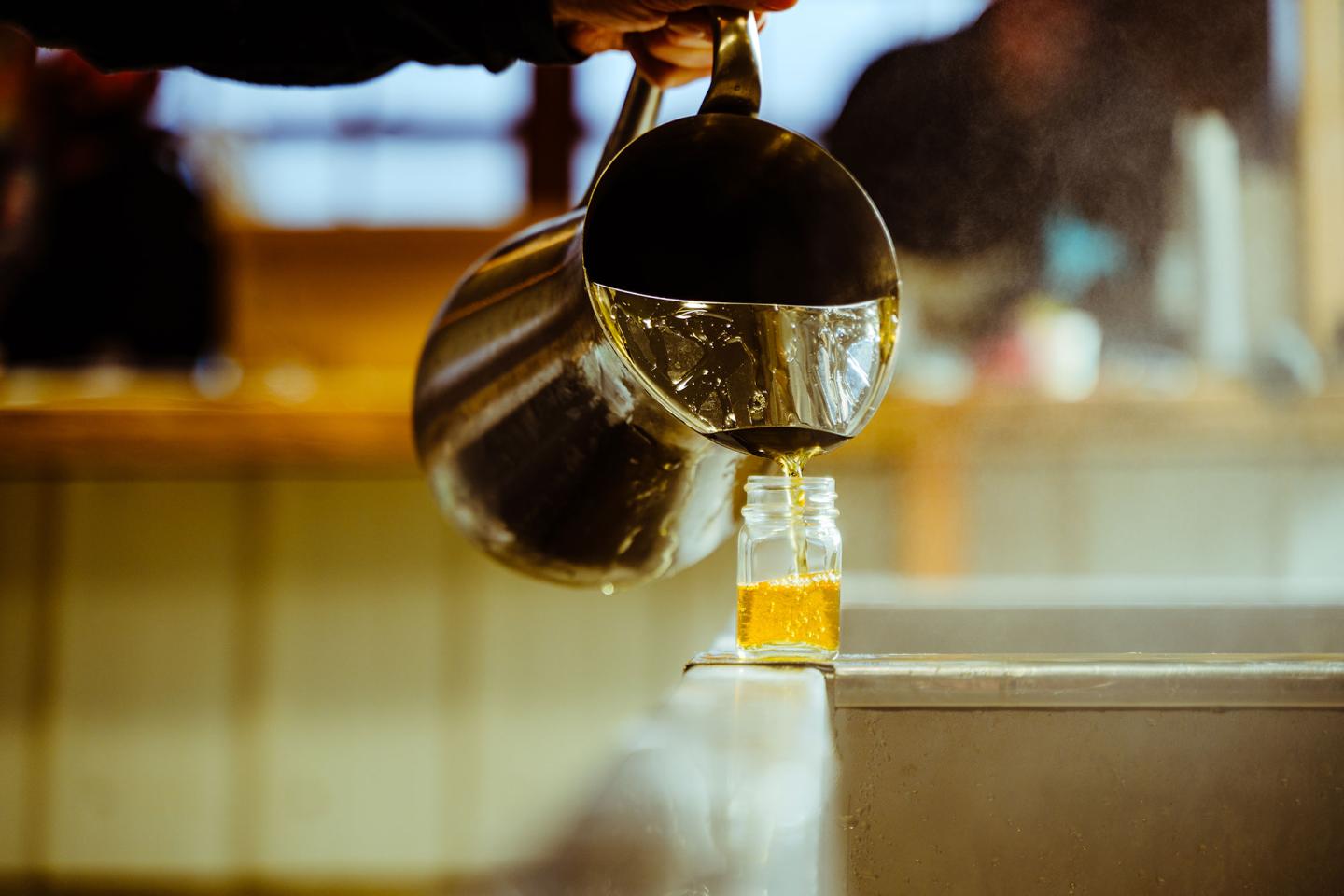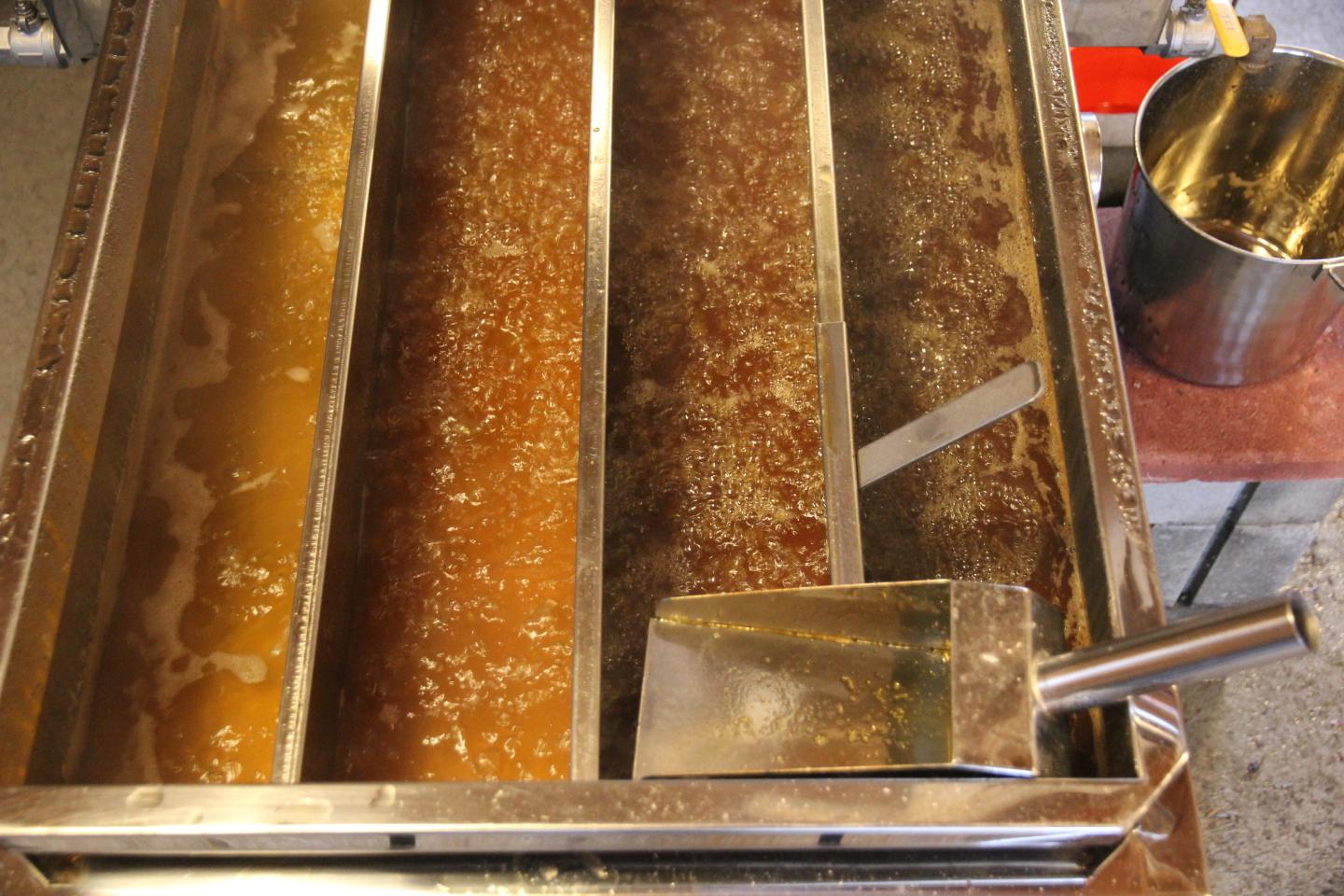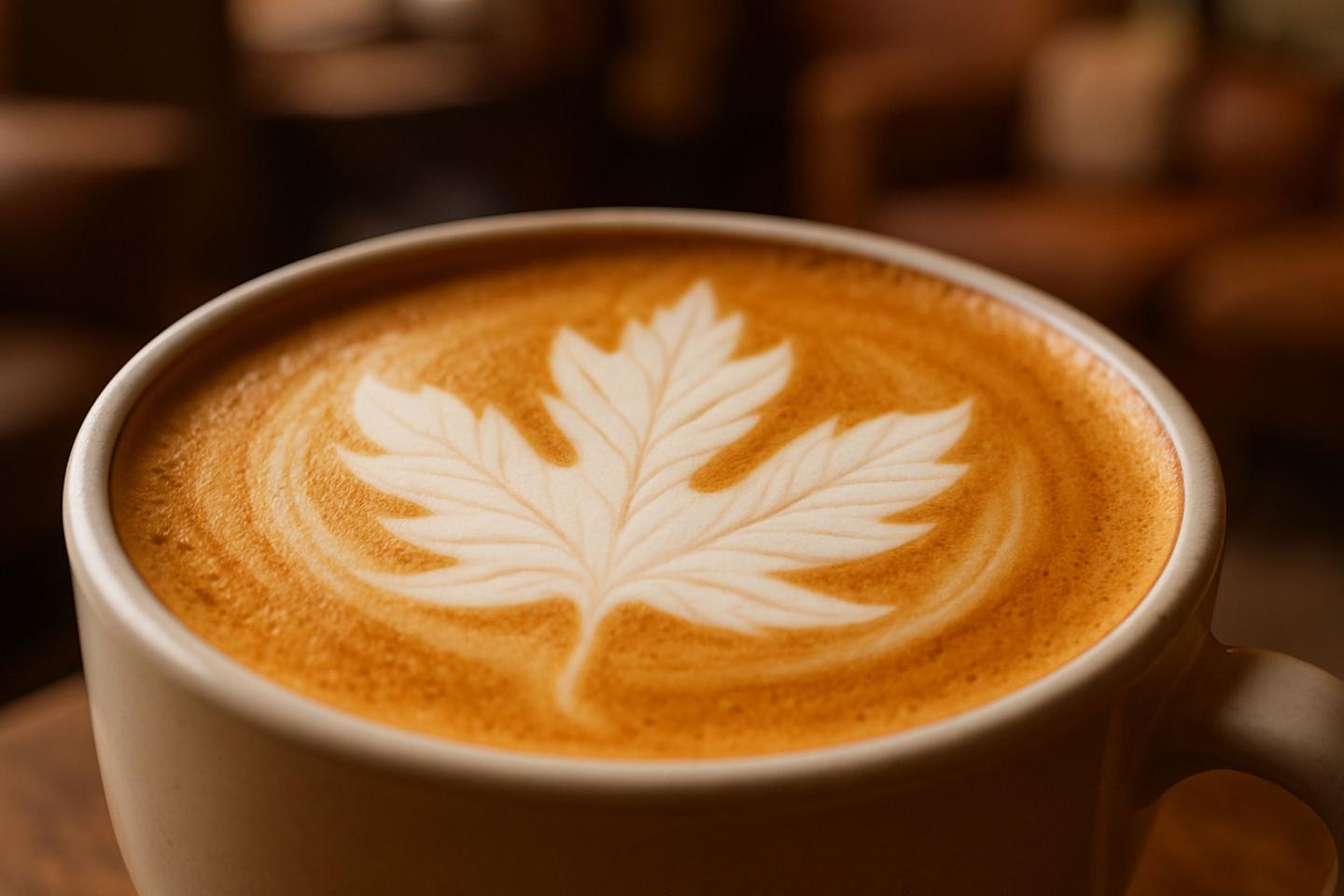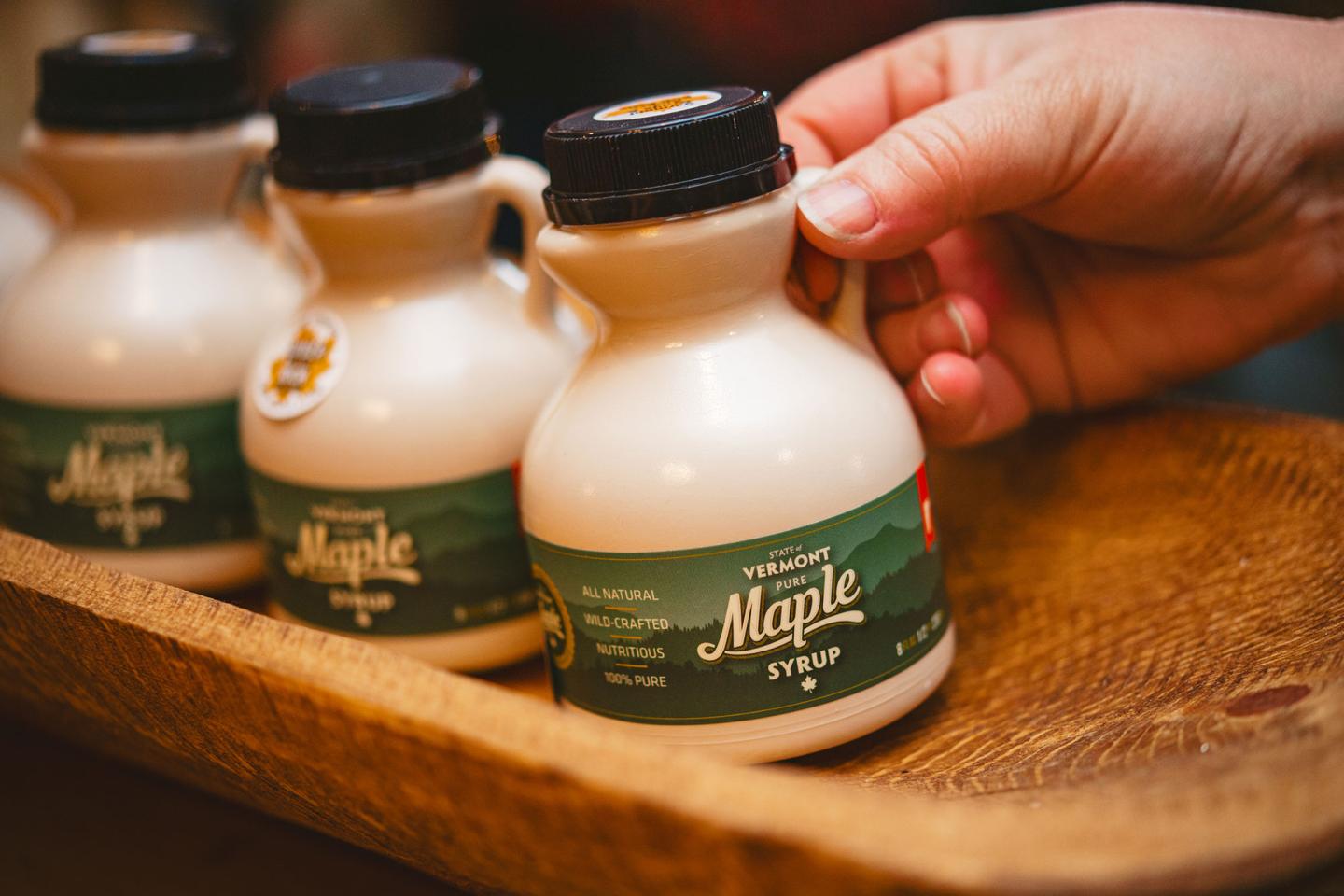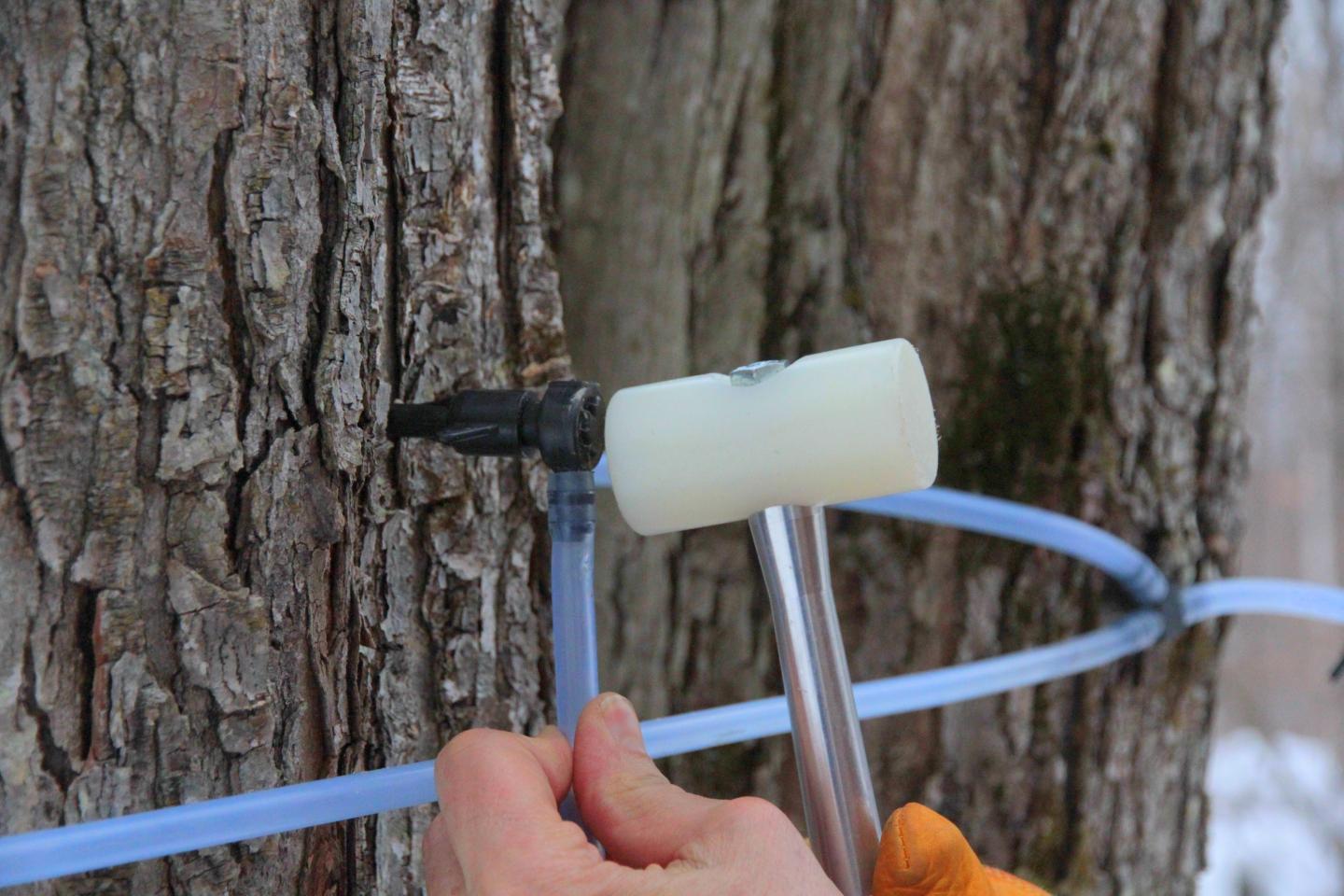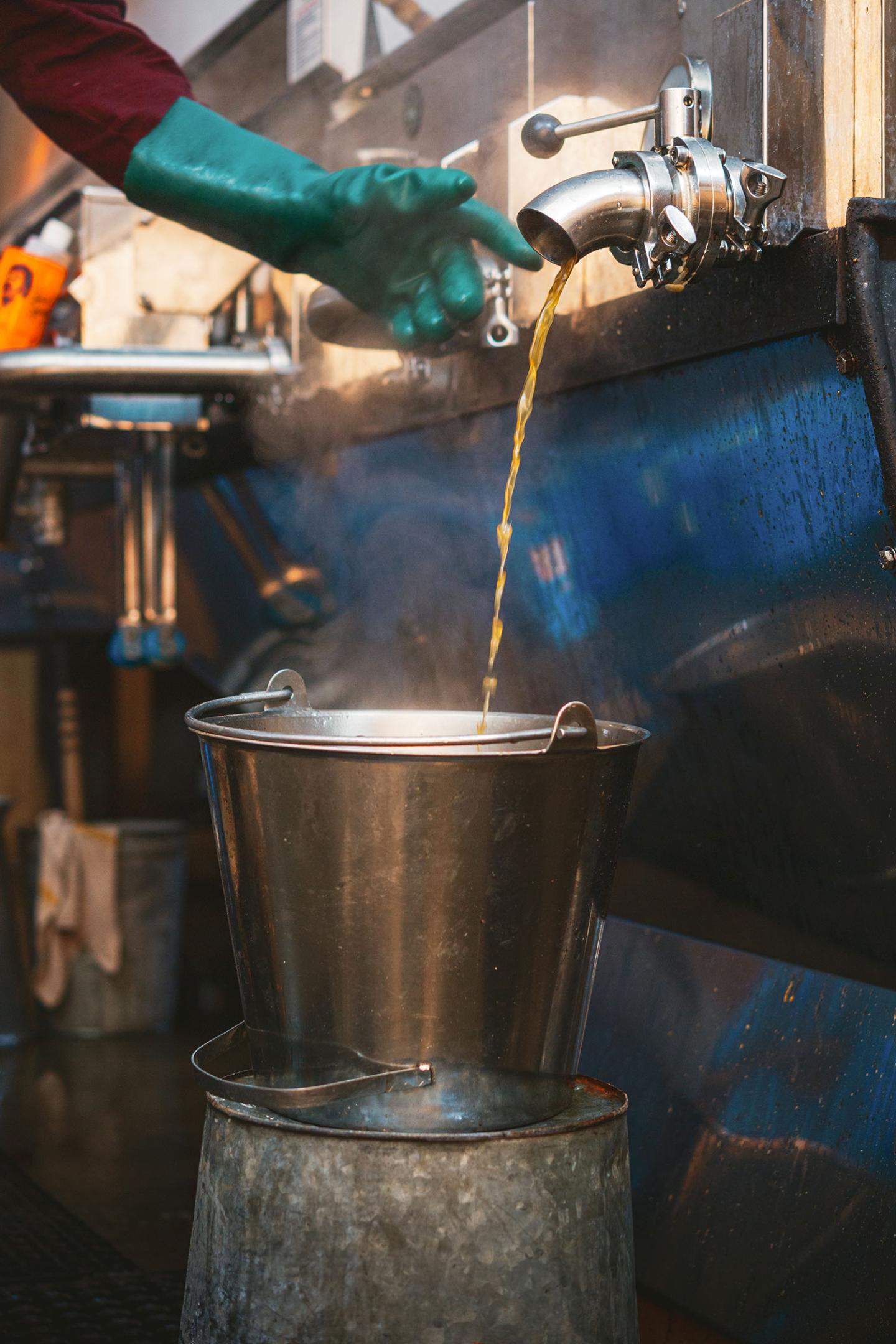
Maple 101
Everything you've ever wondered about maple
Whether you’re a lifelong syrup lover or just learning what makes Vermont maple so special, you’re in the right place. This is your quick-start guide to all things sticky, sweet, and straight-from-the-tree.
From how syrup is made to which grade works best on pancakes, we’ve answered your most common questions — and a few you didn’t know you had.

How syrup is made
From sap to syrup, here's the full journey
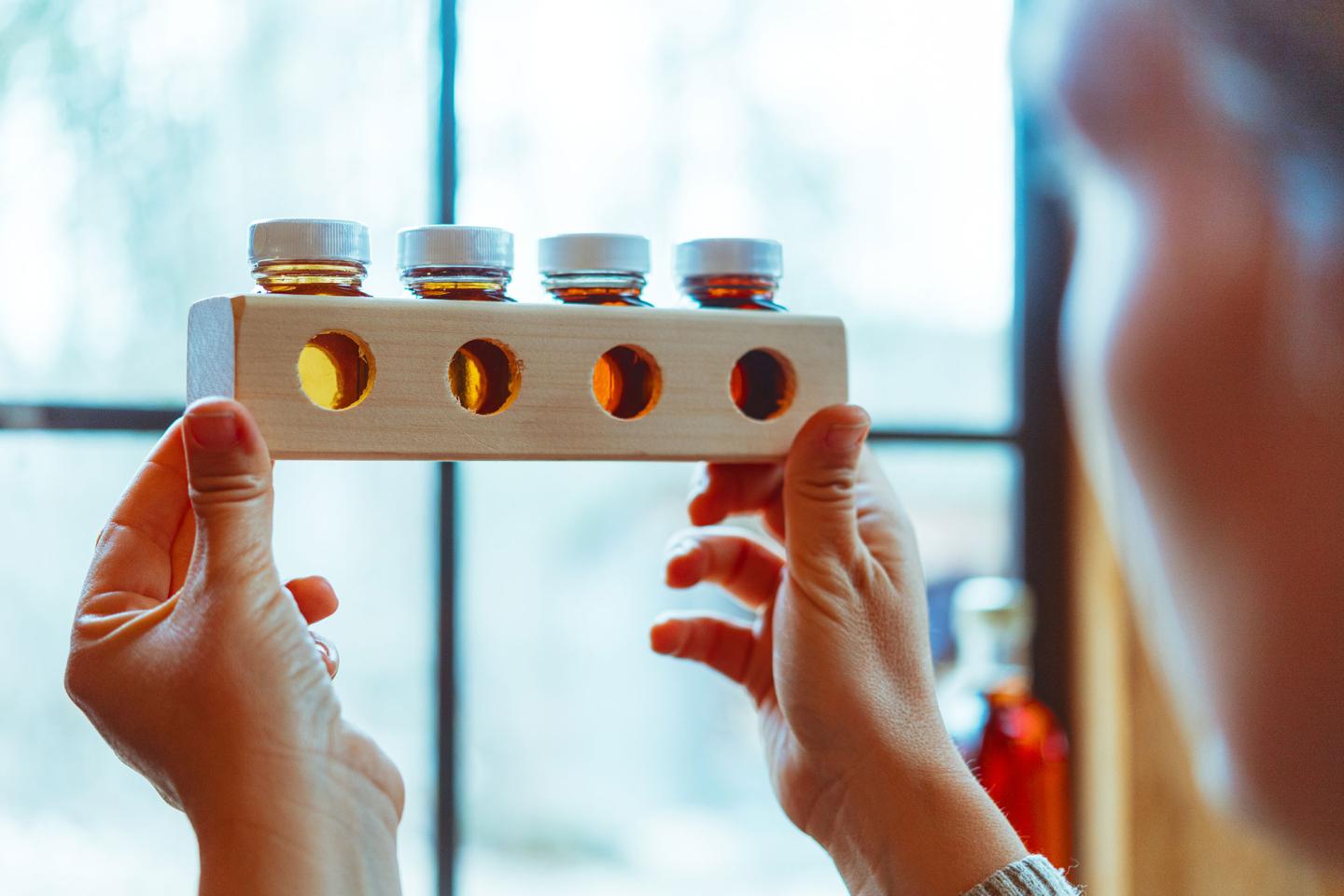
Maple grades and types
Golden, Amber, Dark — what do they all mean?
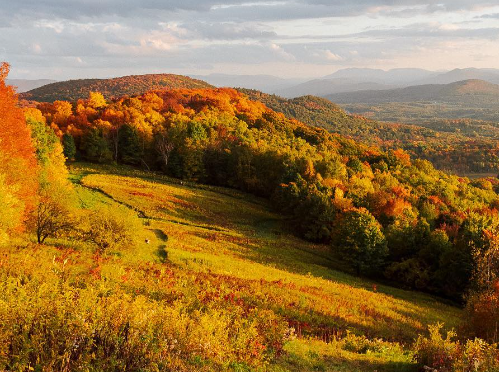
Sustainability and forest care
How Vermont Sugarmakers protect the land
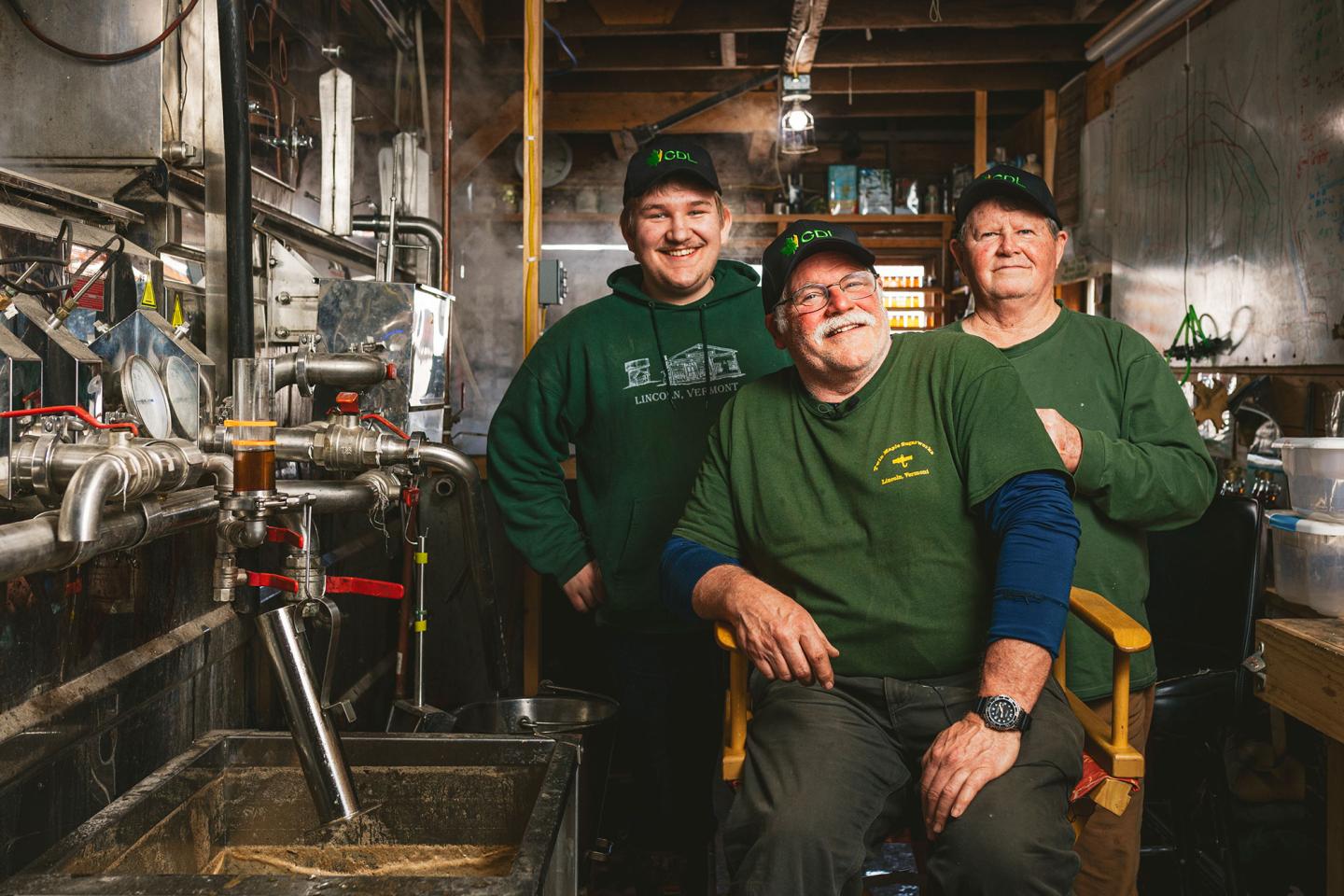
Meet the Sugarmakers
The real people behind the pour
Syrup basics
Is Vermont maple syrup really different than syrup from other regions?
We like to think Vermont maple syrup is different because Vermonters have a long history and tradition of making maple syrup that goes back to indigenous peoples. Our soils and forests offer a sense of terroir to our maple syrup taste. In addition, our state requires a density that is just a bit higher than other states, which leads to a syrup that is just a bit thicker and may have a different mouthfeel.
What makes syrup “pure”?
Pure Vermont maple syrup means that you’ve purchased a natural single-ingredient sweetener made only from the sap of maple trees. In the 1900’s more maple syrup was made in Chicago than other US locations. And that’s because it wasn’t maple syrup; it was table syrup masquerading as pure maple syrup. We don’t have issues with that type of misleading marketing and labeling these days, but it’s still important to know what you’re buying, so read the label!
What are the different grades of maple syrup?
All maple syrup you’ll find in retail containers is Grade A maple syrup and falls into 4 distinct color classes - Golden, Delicate; Amber, Rich; Dark, Robust; and, Very Dark, Strong. These designations are consistent across all maple-producing states and provinces. The best choice is really up to personal preference! So while we recommend different classes of syrup for baking or cocktails, the only wrong choice is something that’s not pure maple syrup. And taste your preferred maple syrup every year - your tastes might have changed and the syrup itself differs in flavor from producer to producer and year to year, depending on individual process and Mother Nature.
What’s the difference between maple syrup and pancake syrup?
Maple syrup is a single-ingredient sweetener from maple trees that relies on producers having forest management practices that take into account long-term, sustainable and biodiverse health of the forest. Generally, pancake syrup is flavored corn syrup with no real maple included. Many of our food preferences stem from our childhood - if you didn’t grow up on maple syrup, find a sugar maker on our map and give it a try!
How it's made
When is sugaring season in Vermont?
Sugaring season in Vermont typically lasts between 4 and 6 weeks. A pattern of freezing and thawing temperatures (below freezing at night and 40-45 degrees Fahrenheit during the day) will build up pressure within the trees, causing the sap to flow from the tap holes. Producers have a short window of time to bring in their entire season’s crop, amidst all sorts of unexpected events from nature and equipment. Once the temperatures remain high enough to end the freeze and thaw cycle for more than a few days, the season is over. This timing can vary greatly from producer to producer, even in a small state like Vermont. The location of each sugarbush really matters when it comes to a good or bad season. If the sugarbush is too cold, the thaw cycles might not be enough for sap flow. If the sugarbush is too warm, the season might end unexpectedly. As Vermont producers say, to be a sugar maker is to be an eternal optimist that it’s going to be a great season (and then do everything in your power to work toward that).
How many trees does it take to make a gallon of syrup?
We talk about the amount of sap it takes to make a gallon of maple syrup - and that can vary greatly from tree to tree and from season to season. When the sap extracted from the tree has good sugar content, it can take as little as 40 gallons of sap to make a gallon of syrup. When the sugar content is less than ideal, it can take up to 100 gallons of sap to make a gallon of syrup. If you want to get into the math of how sugar makers estimate sap to syrup ratios, you can read all about the updated “Jones Rule of 86” on the University of Vermont’s website. This type of work is definitely the science part of the “art and science” of making maple syrup!
What’s the difference between wood-fired and modern boiling?
There are many different “right” ways to make maple syrup (and a few “wrong” ways of course!). There are lots of options for evaporators that boil the sap down into syrup - wood, wood pellets, wood chips, oil, electricity, etc. All of these options come with benefits and challenges and individual producers make the choice that works for their operation and meets their goals. There is a long history and tradition with each option and we don’t rank one as any better, or making better syrup, than the other and we don’t have any research to show that would be the case. We have producer preference and consumer preference and lots of options for great-tasting Vermont maple syrup!
Is making maple syrup sustainable?
Not only is maple syrup production sustainable, it is becoming more so with years of innovation and research. Making maple is definitely a “long game” in the sense that if producers have a bad year or a weather event that takes out some trees, they can’t just grow another row of maple trees. Most maples have to be at least 40 years old to be suitable tapping diameter. And even then, producers need to manage their sugarbushes for long term forest health (with an eye to biodiversity, water management, soil health and many other factors). Many producers use technology like reverse osmosis, which concentrates the sap and means that it takes less time and energy to boil it down into maple syrup. Maple producers across the country and in the Canadian provinces keep the land in healthy, biodiverse forests which is good for all of us and for the long-term health of the planet.
Cooking and using maple
Can I bake with maple syrup instead of sugar?
Yes! Maple syrup and granulated maple sugar are pantry staples and can be substituted wherever your favorite recipe calls for sugar or other sweeteners. Check out our tips and tricks on how to use maple instead.
How do I store maple syrup once it’s open?
Maple syrup is an amazingly versatile, single-ingredient sweetener and we know it's not the least expensive option. So we want to make sure that consumers understand the best ways to store it so it's ready for all of your recipes.
Storing syrup incorrectly can lead to mold or off flavors; those issues can also occur if a maple producer hasn't followed best practices or has had an undetected production issue. Maple producers make high-quality, food-safe products - if you happen to get something that doesn't quite hit that mark, reach out to the producer directly to resolve. Also consider choosing products from members who belong to their state trade association. Trade associations, like the Vermont Maple Sugar Makers' Association, provide a variety of different benefits including access to research-based best practices for all areas of production and packaging. Members are those who value this information and are using it to constantly improve their processes in areas like maple production, quality, sugarbush health and food safety.
Opened containers of maple syrup don't last long in Vermont! No matter how long it takes you to use the whole container, you should store them in the refrigerator or freezer once opened. For daily use, of course the fridge is an easier spot. However, we know that the most economical maple syrup comes in larger containers (in terms of price point per ounce). In that case, choose the larger container and then repack it into clean containers (mason jars work well here) and put those in the fridge or freezer. Many folks we know choose to keep their “daily” syrup container in the fridge and their “future” containers in the freezer.
In the fridge, you'll most likely use it up before you notice any concerns with color or flavor. For pure maple syrup, there is no finite "best buy" or "use by" date because it is a very shelf-stable, single-ingredient sweetener.
Can I freeze syrup?
If kept in the freezer, maple syrup will become thick enough that it might get hard to pour until it has time to come to room temperature (which is why we suggest it for long-term storage, not day-to-day use). In the freezer, maple syrup will stay fresh indefinitely.
What’s the best grade for coffee, cooking, or baking?
We share our favorite classes of syrup for each of these options on our website here. But it’s really personal preference! Lighter grades have a lighter maple flavor which means that if you want the maple flavor to shine through, you might not taste it in baked goods. But if you like the Golden, Delicate maple syrup the best, then it’s still a good choice in baked goods instead of other sweeteners.
Shopping and storing
How can I tell if syrup is authentic?
Authentic real maple syrup has one ingredient on the label - maple syrup! If you have questions about what you’re purchasing, ask us or find a producer on our Maple Map, and rest assured, it’s pure maple syrup.
What should I look for on the label?
When it’s pure maple syrup, it’s a short label of one ingredient: maple syrup. A retail container of pure maple syrup should also have information on the producer or packer with a business name, address, and potentially a phone number or website.
Why is Vermont syrup more expensive?
We’re happy to report that it’s not more expensive. Maple syrup is generally more expensive than other sweetener options, but a little goes a long way. And how many other sweeteners ensure that we all have a healthy, sustainable, forested landscape for future generations? Making maple syrup involves science, equipment maintenance, soil expertise, water management work in the woods, forestry, business management, food safety knowledge and much more. But when you support a local producer, you support healthy forests and local farms. And you know where your food comes from!
How long does it last?
When stored correctly, opened or unopened, maple syrup can last indefinitely (or at least until you’re ready for a refill).
Fun and unexpected questions
Do maple trees get hurt when you tap them?
Tapping a tree creates an area of nonconductive wood around the taphole, which is a wound. Sugar makers take care to let the tree “heal” those wounds and tap away from old holes each year. Tapping near nonconductive wood also means that the sap doesn’t flow very well. Removing taps each year gives the trees time to heal and makes sure that bacteria isn’t introduced into the tree or the spout.
Is syrup vegan?
Maple syrup is great for a variety of dietary choices, including for folks who choose vegan and gluten-free options.
Why does Vermont produce so much syrup?
Historically, maple sugaring in Vermont was part of our agricultural heritage. Many farms were diversified and had a small sugarbush where they tapped trees in the spring. St. Johnsbury, Vermont used to be known as the “Maple Capital of the World”, in a small community of Vermont’s Northeast Kingdom. And this history is celebrated each year with the Kingdom Maple Festival. Vermont has a long history of sugaring and plenty of maples to tap. Where once the sugarbushes were more monoculture in style, with just a stand of maples, most of the larger sugarbushes are thriving and biodiverse forests that benefit Vermonters, our flora and fauna, and the planet.
Can I visit a sugarhouse and watch syrup being made?
Sugar makers are passionate about their craft and are wonderful storytellers. Many sugarhouses are open year round for visits, tastings and tours - check out our Maple Meander passport program to get some ideas. Or consider a visit during the first weekend of spring each March, where the Association coordinates Vermont’s famous Maple Open House Weekend. You’ll have about 100 sugarhouses to explore!
